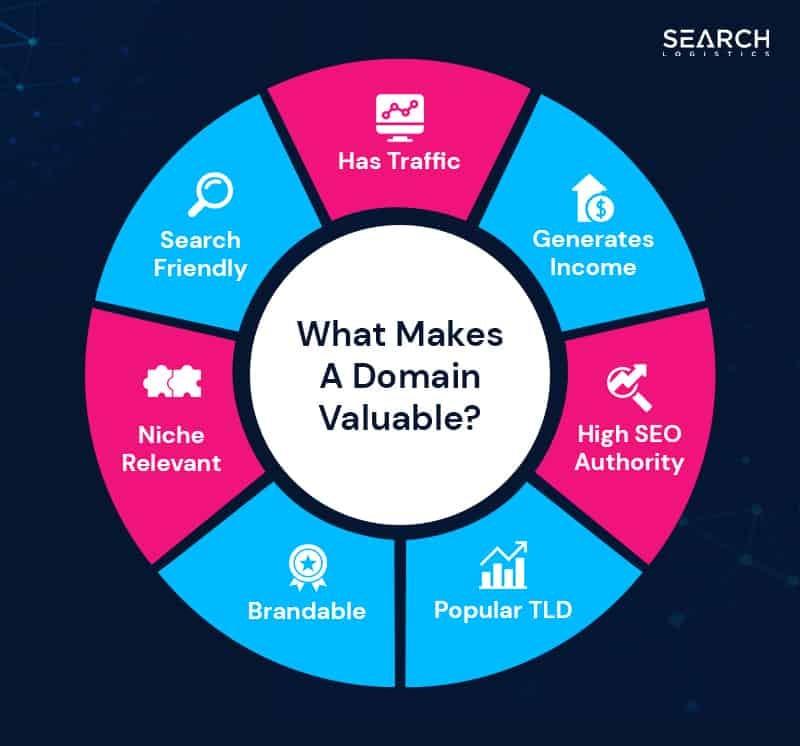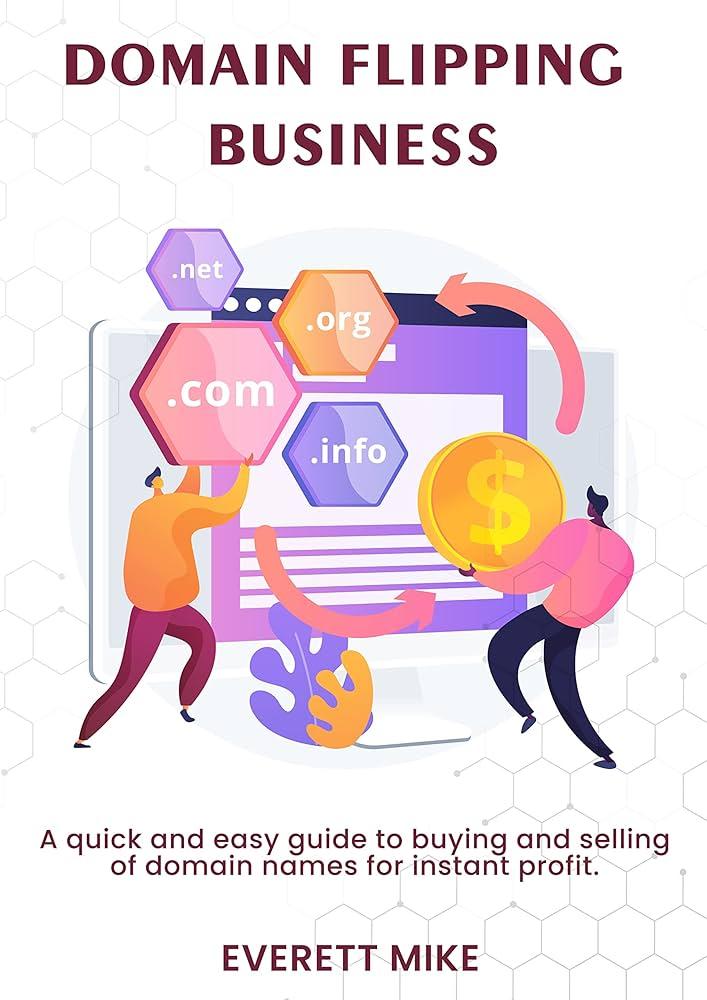Table of Contents
- Understanding the Basics of Domain Flipping and Its Profit Potential
- Identifying Valuable Domains: Tips for Finding Hidden Gems
- Mastering the Art of Domain Valuation and Pricing Strategies
- Effective Marketing Techniques to Sell Your Domains Quickly
- Common Mistakes to Avoid in Your Domain Flipping Journey
- Q&A
- To Wrap It Up
Understanding the Basics of Domain Flipping and Its Profit Potential
Domain flipping is an intriguing venture that revolves around buying domain names at lower prices and selling them at a profit. The key to success in this business is understanding the market trends and recognizing valuable domains. Some factors that can influence the potential profitability of a domain include:
- Keyword Relevance: Names that include popular search terms can attract more buyers.
- Length of the Domain: Shorter domains are often more desirable and easier to remember.
- Market Trends: Domains related to emerging industries or trending topics can yield high returns.
To get started with domain flipping, it’s essential to conduct thorough research. This includes assessing the availability of domains that resonate with your target market and have potential resale value. Tools like domain name generators and SEO analysis software can assist in this process. Once you have a collection of potential domains, you can categorize them based on their characteristics, such as:
| Category | Example Domain | Resale Value Estimate |
|---|---|---|
| Short and Catchy | FunZone.com | $5,000 |
| Keyword-Rich | TopGardeningTips.com | $1,500 |
| Trending Topic | EcoFriendlyTech.com | $2,000 |
Once you’ve built your portfolio, marketing your domains becomes the next challenge. Key strategies include leveraging social media, domain marketplaces, and networking within relevant online communities. Establishing a visually appealing website to showcase your domains can provide a central hub for potential buyers. Remember, patience and persistence are crucial; some domains may take time to sell, while others could turn a quick profit. Maintaining an active presence in the domain flipping community can further enhance your chances of success.


Identifying Valuable Domains: Tips for Finding Hidden Gems
When searching for valuable domains, timing is everything. The most sought-after domains often appear as trends shift in various industries. Keeping an eye on emerging niches, popular events, or changing consumer preferences can lead you to discover domains that are not yet on everyone’s radar. Additionally, leveraging tools like Google Trends or social media sentiment can provide insight into hot topics that may translate into valuable domain names down the line.
Another effective strategy is to focus on keywords. Identify short, memorable keywords that align with potential market interests. Use keyword research tools to evaluate search volumes and competition. A great domain often incorporates these key phrases, enhancing its usability for search engine optimization and potentially increasing its resale value. Consider these tips:
- Opt for domains with .com TLDs whenever possible.
- Avoid hyphens and numbers, as they can confuse potential visitors.
- Research the domain’s history through WHOIS databases to ensure it hasn’t been associated with spam or illicit activity.
Don’t forget to analyze existing brands for potential naming patterns. Many successful businesses have leveraged creative word combinations or invented unique terms, leading to strong brand identity. A keyword table can help categorize your findings and streamline your analysis:
| Keyword | Type | Competition Level |
|---|---|---|
| Eco | Environmental | Medium |
| Tech | Technology | High |
| Chef | Cooking | Low |


Mastering the Art of Domain Valuation and Pricing Strategies
Understanding the worth of a domain is crucial when engaging in domain flipping. The value of a domain can fluctuate based on various factors, and mastering these can lead to significant profit margins. Key aspects to consider include:
- Keyword Relevance: Domains containing popular keywords can attract more traffic, increasing their value.
- Length: Shorter domains are often more desirable and memorable, making them more valuable.
- Brandability: A domain that resonates with a business’s identity can command a higher price.
- Extension: Popular extensions like .com typically hold higher values than lesser-known TLDs.
Once you have assessed a domain’s value, developing a pricing strategy becomes paramount. Here are effective approaches to pricing your domains competitively:
- Market Analysis: Evaluate similar domains on platforms like GoDaddy or Sedo to gauge current market rates.
- Tiered Pricing: Create price brackets based on desirability and potential buyer demographics.
- Negotiation Flexibility: Be prepared to adjust your asking price based on buyer interest and demand trends.
| Factor | Impact on Value |
|---|---|
| Keyword Popularity | High |
| Domain Length | Medium |
| Brandability | High |
| Extension Type | Medium to High |
combining a thorough valuation process with well-planned pricing strategies will create a robust foundation for your domain flipping ventures. As you refine your skills in this field, keep honing your knowledge of current trends and buyer behaviors to ensure your success in a competitive marketplace.


Effective Marketing Techniques to Sell Your Domains Quickly
To maximize the potential of your domain flipping venture, leveraging multiple marketing channels is essential. Social media platforms like Twitter, Facebook, and Instagram can provide instant exposure to your domain listings. Craft engaging posts that include your domain name along with eye-catching visuals or relevant hashtags. In addition, consider actively participating in niche forums or online communities where potential buyers may congregate, such as web development forums or entrepreneurial groups. By positioning yourself as an expert in these spaces, you’ll not only promote your listings but also cultivate a network of potential buyers.
Moreover, utilizing domain marketplaces can significantly speed up the selling process. Popular platforms like GoDaddy Auctions, Sedo, and Flippa allow you to list your domains where many buyers are actively searching. When creating your listings, be sure to include detailed descriptions, specify the target audience, and highlight the unique selling points of each domain. Engaging content is key; consider creating a mini-site or landing page that demonstrates the potential of the domain. This can showcase how the domain fits into a broader business vision, making it more appealing to prospective buyers.
Furthermore, don’t underestimate the power of email marketing. Build a targeted email list from your interactions within the industry and send regular bulletins featuring your latest domain offerings. Use personalization tactics to make each email feel tailored and relevant. A well-designed email can effectively drive traffic to your listings, while incorporating clear calls-to-action will motivate your audience to act quickly. Consider implementing an incentive program, such as discounts for first-time buyers or referral bonuses, to encourage faster sales and build customer loyalty.


Common Mistakes to Avoid in Your Domain Flipping Journey
One of the most significant pitfalls in domain flipping is skipping thorough research. Failing to validate the domain’s history and potential can lead to poor investment choices. Buyers often overlook factors like previous ownership, expired domains, or even spam history, which could significantly affect the domain’s resale value. Tools such as WHOIS lookup and domain auction platforms can provide insights into a domain’s history, helping to ensure you’re investing in a valuable asset.
Pricing strategy is another critical area where many newcomers stumble. Setting an unrealistic price—either too high or too low—can deter potential buyers or leave you with minimal profit margin. Always take the time to analyze similar domains in the market and use appraisal tools to find a reasonable price. Keep in mind that flexibility is key; being open to negotiation can lead to a successful sale. For example, consider the following factors when setting your price:
| Factor | Importance |
|---|---|
| Domain Age | Older domains often have higher value due to established authority. |
| Keyword Relevance | Matching keywords can enhance SEO and marketability. |
| Comparable Sales | Look at recent sales of similar domains for pricing benchmarks. |
Many domain flippers falter by neglecting marketing for their domains. Without a solid strategy to attract potential buyers, even the best domains can languish unsold. Utilize social media, domain name forums, and marketplaces to showcase your listings effectively. Create engaging descriptions highlighting the domain’s strengths and its potential uses. It’s not enough to simply list a domain; you need to present it as a premium asset that buyers can’t resist.
Q&A
Q&A: Learning the Art of Domain Flipping
Q1: What is domain flipping? A: Domain flipping is the practice of buying domain names at a lower price and selling them at a higher price for profit. It involves identifying undervalued or trending domains, acquiring them, and then strategically marketing them to potential buyers.Q2: How do I start with domain flipping? A: To start flipping domains, follow these steps:
- Research: Learn about current market trends and what makes a domain valuable.
- Find domains: Use domain registrars to discover available names that have potential, such as those with popular keywords or memorable branding.
- Make the purchase: Buy the domain through a reputable registrar.
- Market the domain: List it on marketplaces, build a simple site, or reach out to potential buyers directly.
Q3: What types of domains should I look for? A: Look for domains that are short, easy to spell, and contain popular keywords. Also, consider expired domains that already have backlinks or traffic. Domains with potential brand appeal or specific niche relevance can also perform well.
Q4: How do I determine the value of a domain? A: The value of a domain can be assessed through various factors:
- Length: Shorter names are generally more valuable.
- Keywords: Domains with popular or trending keywords have higher value.
- Extension: .com domains usually command higher prices than other extensions.
- History: A domain with a strong history or existing traffic can also be worth more.
Q5: Is there a risk involved in domain flipping? A: Yes, like any investment, there are risks. The domain market can be unpredictable, and not all domains will sell for a profit. It’s essential to do thorough research and not invest more than you can afford to lose.
Q6: How can I market my domains effectively? A: Utilize online marketplaces specifically for domains, such as GoDaddy Auctions or Sedo. Additionally, leverage social media to reach potential buyers and consider creating a simple landing page for each domain to showcase its potential.
Q7: What tools can help me in domain flipping? A: Tools like NameBio (for historical sales data), Estibot (for appraisal), and various domain registrars can help you navigate the flipping process. Keyword research tools can also aid in identifying valuable terms to help select prospective domains.
Q8: How long does it usually take to sell a domain? A: The timeframe for selling a domain can vary widely, from a few days to several months or longer. Factors like market demand, pricing, and marketing techniques can significantly influence this duration.
Q9: Are there any legal considerations in domain flipping? A: Yes, it’s important to ensure that the domains you purchase are not trademarked or infringing on other businesses’ rights. Conduct due diligence before buying any domain to avoid legal issues.
Q10: Can I flip domains as a full-time job? A: Many individuals have turned domain flipping into a full-time job, but success requires dedication, ongoing research, and market understanding. It can also take time to build a reputation and develop a portfolio of valuable domains.
Engaging in domain flipping is a blend of creativity and strategy. By following these guidelines and nurturing your skills, you can find success in this rewarding venture. Happy flipping!

